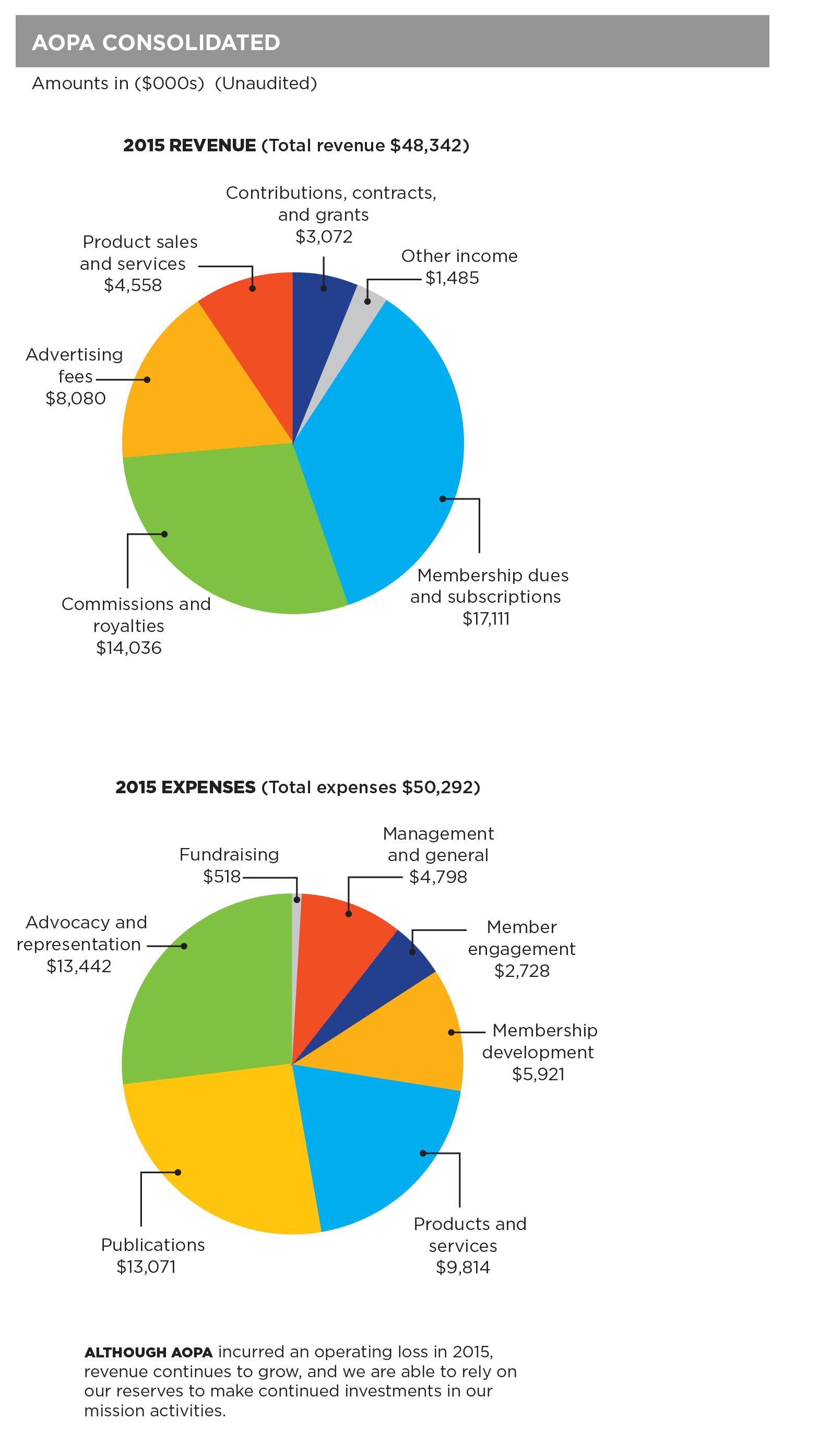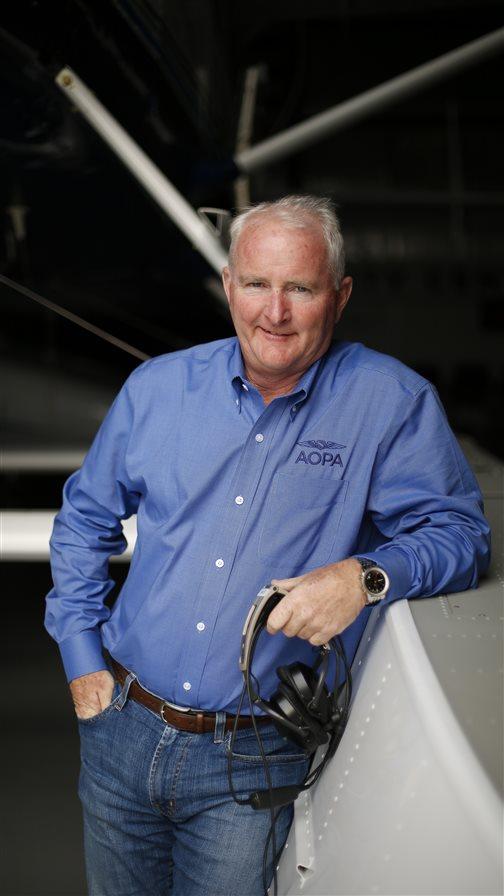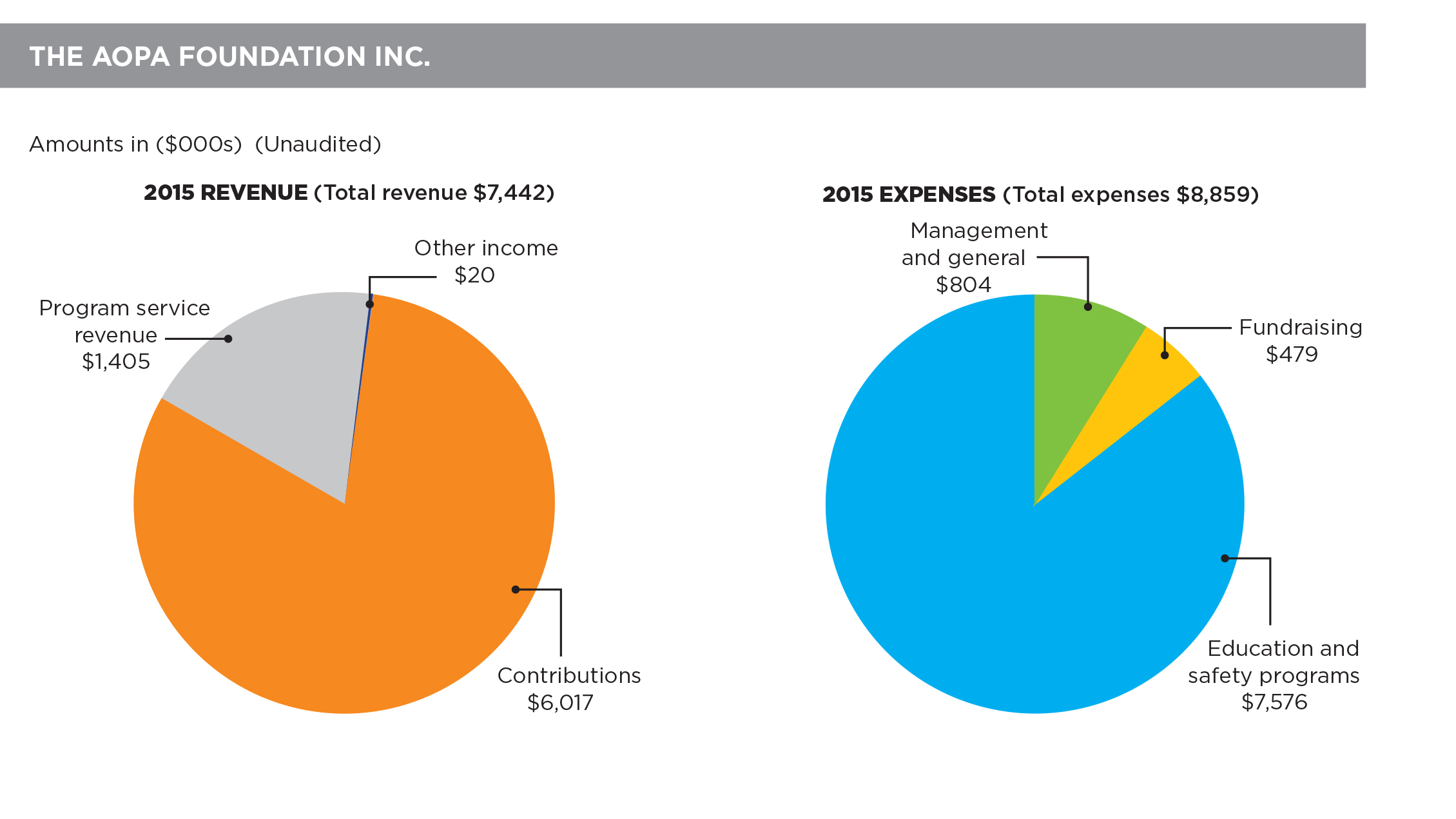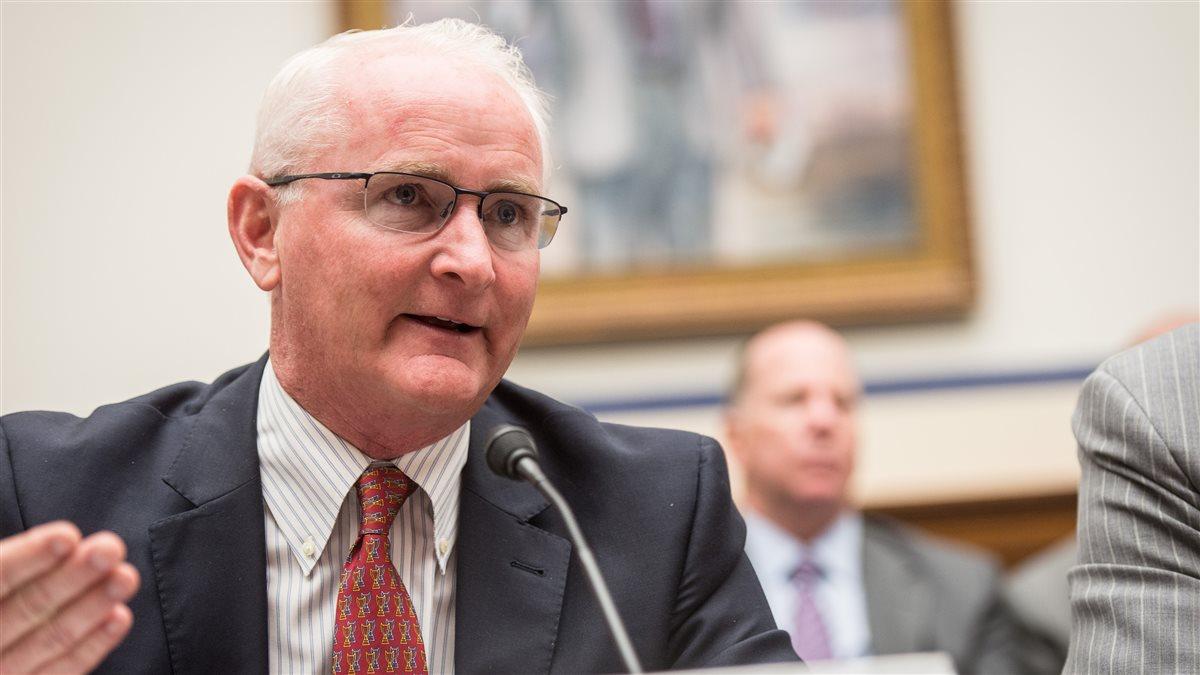AOPA Annual Report: Ready for our future
Setting the stage for the next Golden Age of Aviation

Fluctuations in the health of GA in the United States can be attributed to many factors, including the pilot community, regulation, and the economy. World War I created the pilot community, training new pilots who came home to fly in largely unregulated skies. It was during this so-called Golden Age that a group of people had the foresight to understand what could happen if they didn’t preserve access to aviation—so they created AOPA. The mission that launched AOPA during aviation’s first golden era still drives the association today, as it lays the groundwork for a bright future.
World War II brought a similar boost to the community, with a whole new wave of pilots. Since that boom, the economy and regulatory changes have at times undermined the growth of the industry, as AOPA’s founders predicted.

Through ups and downs, the joy of flight has never left. There have been many challenges over the years to the health and vitality of U.S. aviation, and AOPA has remained steadfast in its defense of your freedom to fly.
The future for GA again looks bright. We are on the cusp of key regulatory changes that will make flying more accessible, and emerging economic and generational trends present opportunities we have not seen in the past. AOPA is well positioned to capitalize on these shifts in its ongoing effort to make flying more accessible to everyone.
AOPA’s year-over-year revenue is up, expenses are down, and we are making long-term investments that will allow us to capitalize on a changing environment and do an even better job at facilitating access to aviation. Income from advertising and partnerships, along with charitable donations from members like you, allows us to provide a wide variety of services while keeping dues as low as possible.
AOPA is already the leader in news, insurance, advocacy, safety, training, and legal guidance in and around general aviation; we will harness those strengths and build new ones as we grow and become even more effective in a dynamic environment.
The first major change on the horizon is third class medical reform, which will reduce the cost of flying and keep more pilots flying safely. Third class medical reform has been a top priority for AOPA and our members for years, and language has passed the Senate twice in the past few months: as the Pilot’s Bill of Rights 2 in December 2015 and more recently in the chamber’s FAA reauthorization legislation. The House has also included third class medical reform language in its FAA reauthorization legislation. Sen. John Thune (R-S.D.), chairman of the Senate Commerce, Science, and Transportation Committee, has stated that this third class medical reform will “reduce regulatory burdens…while still maintaining safety.” We agree.
Under the legislation that passed the Senate, most pilots who have had a regular or special issuance third class medical certificate within 10 years of enactment would never need to see an aviation medical examiner again. Pilots would need to see a personal physician every four years, make note of the visit in their logbook, and keep a certification signed by the doctor in their logbook following the examination. These pilots would complete a free online medical education course every two years and be permitted to fly aircraft up to 6,000 pounds and carry up to five passengers at altitudes below 18,000 feet and speeds up to 250 knots, under VFR or IFR.
Once the legislation is signed into law, there is still more to do. AOPA is prepared to work with the FAA, pilots, insurers, and doctors during the rulemaking process to ensure the law is implemented effectively and all stakeholders understand that the changes replace an unnecessary and burdensome process.
Once third class medical reform is implemented, AOPA’s Rusty Pilots program is ready to turn this influx of lapsed pilots to current ones. The program has already had great success in getting pilots back in the air: Rusty pilots attended 103 seminars nationwide in 2015, and 25 percent of attendees completed their flight review. Over the past two years, we estimate that Rusty Pilots has put more than 1,200 pilots back in the air, and third class medical reform will surely drive those numbers higher.
Additionally, the FAA recently proposed a new rule that would replace the current prescriptive design requirements for new aircraft with performance- and risk-based standards: Part 23 reform. AOPA is working with the FAA to usher in similar reforms that will permit owners of legacy aircraft to install proven modern safety equipment such as angle of attack indicators. Once a pathway has been established, it will be easier and less expensive to get modern safety equipment into GA aircraft.
While the FAA works with industry on these changes, it also is working to accommodate the exponential growth of another type of aircraft: unmanned aircraft systems. AOPA has long contributed to regulatory efforts to lay the groundwork for the safe integration of drones. Now it is expanding on those efforts with plans to offer educational resources for drone operators under the banner of its You Can Fly initiative.
These reforms and others will go a long way in ushering GA into a new era of vibrancy—and we even have more reasons to be optimistic.
As the next generation begins to look for fulfilling and good-paying careers, the growing pilot shortage and premium on science, technology, engineering, and math (STEM) jobs means more young people will turn to aviation. GA is the gateway to these opportunities. Aviation is an effective way to reach young people and teach them skills that will lead to great careers, and this can be accomplished through formalized classroom programs or by simply learning to fly at a local airport. AOPA’s High School Aviation Initiative works with educators, students, and aviation organizations to develop curriculums and programs so that through aviation, students can learn needed skills, which will enrich their lives and careers as well as our nation’s economy.
Whether they enter aviation for a career or simply for the love of flying, young people bring a fresh perspective to the pilot community—including an evolving concept of ownership. A Goldman Sachs report said that millennials are “turning to a new set of services that provide access to products without the burdens of ownership.” This shift is an opportunity for GA in the form of flying clubs. AOPA’s You Can Fly initiative has already taken the lead by establishing a network of more than 700 flying clubs across the country, which make flying accessible to people who don’t want to own an airplane but still want to fly. Innovative approaches such as this will bring new opportunities to pilots old and new to fly in a cost-effective and personalized manner.
The next generation of pilots will strengthen GA in the United States and our economy through the highs and lows— AOPA will be here to make sure we make the most of these opportunities.
Legislative priorities
Facing the challenges from Washington, D.C., and beyond
AOPA was founded to protect the freedom to fly. Our staff of legislative and regulatory affairs specialists is dedicated to continuing that vision by working hard every day for your interests. Here are some of AOPA’s top priorities for 2016:
Third class medical reform. Reform has never been closer. When this effort passes Congress it will be the first major change in medical certification in more than half a century.
FAA reauthorization. Although the prospect of user fees remains, AOPA is committed to ensuring that we continue to pay through the fuel tax.
Non-TSO equipment and Part 23 reform. Technology exists today that can make flying safer and more affordable. AOPA is working to see that it can make the transition from strictly Experimental aircraft to certificated aircraft.
State legislative issues. AOPA works with state legislatures to help grow GA with the passing of maintenance tax exemptions, fly-away exemptions, and recreational use statutes that include GA, and by ensuring that airports are funded and protected.
Saving airports. Through a reinvigorated Airport Support Network, AOPA is active in your area with nearly 2,500 volunteer members who keep their eyes and ears open in an effort to keep airports strong and secure.
Unleaded fuel. AOPA is a key player in ensuring a smooth transition away from a leaded fuel source.
Did you know?
AOPA is active in numerous areas you may not be aware of
• Have you called 800-USA-AOPA? If so, you’ve spoken to one of 30 specialists who handle more than 250,000 contacts each year.
• The association has a staff of four attorneys and hundreds of panel attorneys around the country ready to assist Pilot Protection Service participants in personal legal and regulatory challenges.
• Our AOPA Go mobile flight planning and weather application was designed by a team of in-house developer-pilots who are passionate about providing the most relevant information in the most efficient way.
• A team of three full-time Ambassadors with two more soon to come on board is scattered around the country to work with flying clubs and flight schools on a local level.
• Our local hangar and event space, the National Aviation Community Center, has hosted weddings, social gatherings, corporate meetings, Cub Scout camps, and paper airplane contests. It also houses multiple simulators, a classroom, and a few airplanes.
• A group of dedicated staff members works to solidify corporate partnerships and other relationships that help keep dues low.
• The Washington, D.C.-based advocacy team represents your interests in Congress and inside dozens of federal agencies, including the FAA, EPA, Homeland Security, and more.
• An events staff of six people coordinated seven shows and events last year, reaching tens of thousands of attendees.
• The media team produces 2,272 magazine pages, many hours of video content, and hundreds of web stories each year.
ASK MARK
AOPA President and CEO Mark Baker takes your questions
 1. How is AOPA improving access to aviation?
1. How is AOPA improving access to aviation?
AOPA is already making significant gains in advocacy that will reduce costs and unnecessary bureaucratic hurdles, and our You Can Fly program is focused on strengthening the GA community and increasing access to aviation, no matter if you are a current, lapsed, or future pilot.
You Can Fly’s initiatives support flying clubs, encourage best practices in flight training, get lapsed pilots back in the air, bring AOPA’s resources and expertise to pilot groups across the country, and help high school students learn more about aviation opportunities.
In 2015 alone, we helped start 10 new flying clubs and held 103 Rusty Pilot seminars, and at the most recent Sun ’n Fun AOPA announced we will give away a Reimagined 150 to a startup flying club. To learn more about the giveaway and our other programs, visit AOPA.org.
2. How can we pass third class medical reform?
AOPA will continue to pursue every possible opportunity to accomplish third class medical reform, and there are now three bills in the House of Representatives to get it across the finish line. In late 2015, the Senate passed the Pilot’s Bill of Rights 2, which contains aeromedical reform, and both the House and Senate included reforms in each of their FAA reauthorization packages.
If a long-term FAA reauthorization bill does not become law this year, the House can still act on the Senate Pilot’s Bill of Rights 2.
3. What is AOPA doing to improve cross-border operations?
Cross-border GA is an important part of our economy as well as our freedom to fly. AOPA recently worked with the U.S. Customs and Border Patrol to end unwarranted searches of GA aircraft, and that has led to new discussions about how the process can improve, especially through the use of new technology. These changes will decrease the cost and bureaucracy for pilots and at the same time increase border security.
We are also working directly with foreign governments, including those in the Bahamas, Canada, Mexico, and others, to improve the experience our pilots have when they fly outside of the United States.
4. Where can I meet and talk to AOPA representatives?
First, we hope you can come visit us at our Maryland headquarters at Frederick Municipal Airport (FDK), where we offer our members free tiedowns at the AOPA ramp and personalized tours Monday through Friday 8:30 a.m. to 4:30 p.m., no appointment necessary.
Additionally, we will host four AOPA Fly-Ins this summer in North Carolina, Washington, Michigan, and Arizona, and you can also stop by the AOPA tent this July at EAA Airventure in Oshkosh, Wisconsin.
Finally, if you have an important or time-sensitive matter, you can contact our Pilot Information Center (800-USA-AOPA) Monday through Friday, 8:30 a.m. to 6 p.m., Eastern time or email [email protected]. Our skilled group of pilots and flight instructors has more than 70,000 hours of collective flight experience. During the course of a given year, our specialists respond to more than 250,000 member questions via phone, emails, and letters.
A message from Bill Ayer, chairman of the AOPA Foundation Board of Visitors
I am proud to support AOPA by contributing my time to the AOPA Foundation Board of Visitors and by contributing financially to the AOPA Foundation. The money raised by the AOPA Foundation is used to pay for AOPA projects critical to general aviation, and together we are making a positive impact to improve aviation safety and to enhance the pilot community. While a lot has been accomplished, much more remains to be done.
Support from donors like us funds educational efforts of the AOPA Air Safety Institute. ASI is one of the flagship programs for the association, setting the industry standard for aviation safety education and research. In 2015, pilots around the world accessed nearly two million safety products online, and the twenty-fourth edition of the annual Joseph T. Nall accident analysis report was published. In 2015, ASI also brought to pilots:
• three new online courses.
• two Accident Case Studies.
• 10 safety videos.
• 200 in-person safety seminars.
• 11,000 CFI renewals.
Our support also funds the You Can Fly program and its goal to get more people flying, and to keep them flying with access to affordable aircraft and shared cost arrangements. Here are some highlights from 2015:
• Conducted 103 free Rusty Pilot seminars, with 3,500 attendees. Since program inception, more than 1,200 lapsed pilots are now back in the left seat.
• Helped start 10 new flying clubs in 2015 (with 20 more on track in 2016).
• Three full-time AOPA Ambassadors across the country promoting safety education, encouraging the formation of flying clubs, and bringing AOPA’s resources to the pilot community.
• 24 flight training scholarships for aspiring pilots of all ages.

We also are making great strides in promoting aviation and related careers to young men and women of high school age. Of particular note, AOPA launched the first High School Aviation Symposium in November 2015. More than 150 educators, pilots, and aviation industry leaders came together to learn how to incorporate aviation components into STEM (science, technology, engineering, and math) curricula in high schools nationwide. The AOPA High School Initiative will grow the number of future pilots, aerospace technicians, and engineers—and it’s funded solely by charitable contributions to the AOPA Foundation.
Also, the five regional Fly-ins in 2015 were funded by gifts to the Foundation. More than 13,000 members and guests attended seminars and enjoyed the warm camaraderie surrounding these events.
All of this work in outreach, safety, the You Can Fly program, and community-building is aimed at securing the future for general aviation. AOPA is ideally positioned to lead the effort. I have spent a lot of time with the AOPA team over the past year and you can have confidence in their work to expand these successful programs and to explore new areas for improvement.
Thank you. With our continued support, AOPA can move forward with confidence.
Fly Safely,
Bill Ayer
Volunteer Chairman, AOPA Board of Visitors
Former Chairman and CEO of Alaska Air Group
ATP, CFII, and Malibu owner since 1984



